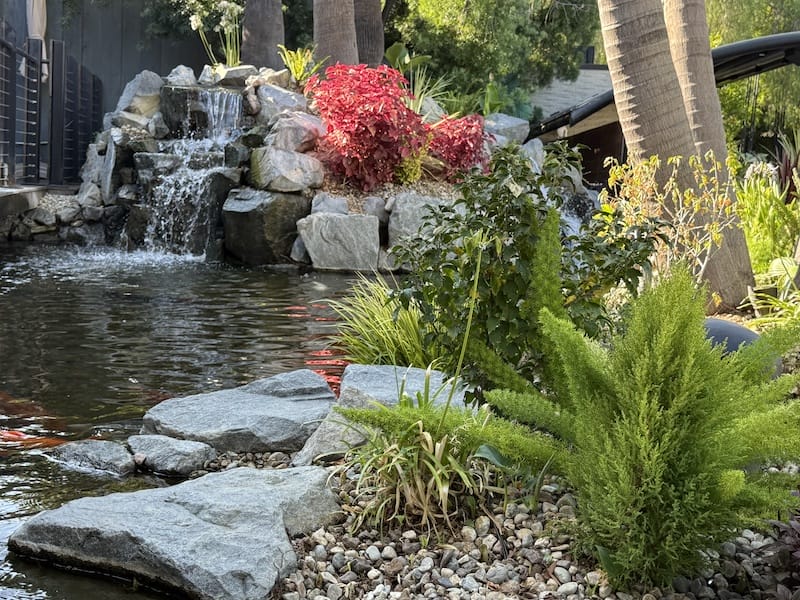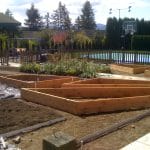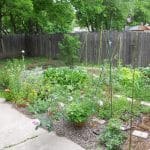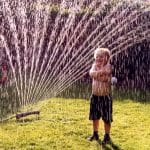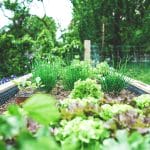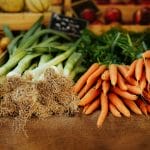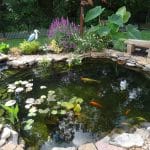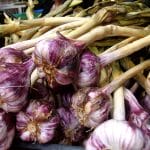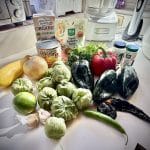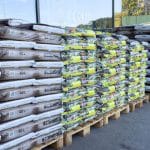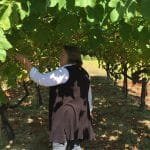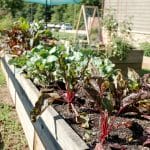Keeping a Pond Healthy Without Driving Yourself Crazy
I used to think a healthy pond meant glass-clear water, like a hotel pool. It turns out that ponds don’t want to be perfect; they want to be alive. When you treat the water like a little ecosystem instead of a container, the whole thing settles down—less fussing, fewer problems, more dragonflies. Here’s how I keep mine steady (after plenty of mistakes I’d rather not repeat).
Start with Balance (Plants ↔ Fish)
The most common trouble? Too many Fish and not enough plants. Fish make waste; algae love waste. Plants absorb it and cast shade on the water, preventing it from overheating.
- Aim for 40–60% plant cover in warm months.
- Mix floating pads (lilies), edge plants (rushes, irises), and submerged oxygenators (hornwort).
- If you’re fighting string algae, it’s often a sign you need more plants—or fewer Fish.
How Many Plants (and Which Kinds)?
Think in layers—like planting a garden bed around a patio.
Floating (shade + calm)
Water lilies (hardy), lotus (needs room). In warm regions, consider water hyacinth or water lettuce (both tropical; check for invasiveness in your area).
Marginals (filter + structure)
Pickerel rush, Louisiana iris, cattails (dwarf varieties are tidier), marsh marigold, sweet flag. These sit on shelves 4–12″ deep and slurp nutrients all day.
Submerged Oxygenators (quiet workhorses)
Hornwort, anacharis, cabomba. Tuck bunches where they won’t get uprooted by Fish.
Simple planting counts:
- 300–500 gal: 2–3 marginals, 1–2 lilies, 3–5 oxygenator bundles.
- 800–1,200 gal: 4–6 marginals, 2–3 lilies, 6–8 oxygenator bundles.
- 2,000+ gal: 6–10 marginals, 4–6 lilies, 10+ oxygenator bundles scattered around.
(I usually plant a touch heavy at first, then thin once the shade kicks in.)
Fish: How Many, What Size, and When to Stop
Goldfish are forgiving; koi are gorgeous but messier and bigger.
- Goldfish rule: ~1 inch of Fish per 10 gallons.
- Koi rule: ~1 inch of Fish per 20 gallons (they’re heavy waste-makers).
Rough stocking that won’t bite you later:
- 500 gal: 10–12 goldfish (let them grow), or up to ~25 small comets if you plan to rehome later. Koi: at most 4–5 juveniles (and that’s a “for now” number).
- 1,000 gal: ~20–25 goldfish, or 6–8 koi.
- 2,000 gal: ~40 goldfish, or 12–15 koi.
Fish grow. A 3″ koi can turn into a 20″ torpedo. I’d rather keep fewer, larger Fish that glide under the lily pads than a crowd that constantly pushes the filter to the edge.
Feeding (the part we all overdo)
Warm water: what they’ll eat in 2–3 minutes, once or twice a day. Cold water (<50°F): stop feeding—metabolism slows; uneaten food rots. I’ve gone whole winters without feeding, and the Fish came out fine in spring.
Keep the Water Moving (Oxygen Is Everything)
Still water gets grumpy: mosquitoes appear, oxygen levels drop, and muck builds. A small pump, spillway, or bubbler makes a huge difference. One of my favorite rigs was just a pump pushing water through a pile of flat stones—looked natural, sounded great, and kept the pond “breathing.”
Filters and Pumps (Heart + Lungs of the Pond)
You don’t need fancy—just well-matched.
Filter types
- Mechanical: catches debris (sponges, mats).
- Biological: high-surface media where beneficial bacteria convert toxic ammonia → nitrite, → safer nitrate.
- UV clarifier (optional): helps with “green soup” by clumping free-floating algae, allowing the filter to capture it.
Most small to medium-sized ponds do fine with a combined mechanical and biological unit (UV optional). Bigger builds often use separate boxes or DIY barrels stuffed with media—gardeners love a good hack.
Pump sizing (don’t starve the flow)
Baseline: turn the entire pond over about once per hour. Go bigger if you keep koi, run a tall filter, or have a waterfall/stream.
- 500 gal: ~500 GPH
- 1,000 gal: 1,000–1,200 GPH
- 2,000 gal: 2,000–2,500 GPH (more if you’re pushing uphill)
I oversize slightly. Head height (pushing water up to a waterfall) eats flow; check the pump’s flow curve against your actual lift.
Depth, Shade, and Summer Sanity
Shallow ponds heat up fast, and hot water holds less oxygen. That’s when algae parties and fish sulk.
- Minimum depth: 20″ for goldfish; ~3 ft for koi if you can swing it.
- Float lilies for shade, add tall marginals on the sunny side, and consider a simple shade sail in heat waves.
Winter: What Actually Matters
Fish slow to a crawl. No feeding below ~50°F. In freezing climates, keep a hole in the ice open with an air stone or floating de-icer so gases can escape. If your pond is shallow enough to freeze solid, bring Fish into a tub with filtration until spring.
Don’t Scrub It Sterile
A little algae is normal. A thin layer of settled mulm is a buffet for microbes and insects. I net leaves before they rot, pull excess string algae by hand, and leave the “good slime” on filter media so bacteria survive.
Topping Off (Why Hose Water Sometimes Causes Drama)
Tap water often carries chlorine/chloramine. Big top-offs? Use a dechlorinator. Small trickles are usually delicate, especially if your city uses chlorine (not chloramine), but I still play it safe before making significant changes.
Quick Seasonal Rhythm (what I actually do)
- Spring: Trim dead plant bits, rinse mechanical media in pond water, and check the pump/hoses.
- Summer: Perform light plant trims, skim debris, monitor water temperatures, and check oxygen levels.
- Fall: leaf net goes on early (learned that one the hard way).
- Winter: keep that vent hole open; leave the rest alone.
Pond vs. Pool (the fast truth)
A pool is a blue box you sterilize for people. A pond is a little ecosystem you tend for life. Pools run on chemicals and scrubbing—ponds run on plants, bacteria, steady flow, and a light hand. Once balance lands, you mostly admire it.
And that’s the real win: sit down at dusk, listen to the spillway, and count the dragonflies. If it’s humming along, you’ll feel it.
Frequently Asked Questions About Pond Health
+What size pump do I need for my pond?
Plan to turn over the pond volume about once per hour. Baselines:
- 500 gallons → ~500 GPH
- 1,000 gallons → 1,000–1,200 GPH
- 2,000 gallons → 2,000–2,500 GPH
Run larger if you keep koi, have a waterfall/stream, or push water up to a tall filter (head height reduces actual flow). Check the pump’s flow curve against your lift.
+How many fish can I keep (goldfish vs. koi)?
- Goldfish: ~1 inch of fish per 10 gallons.
- Koi: ~1 inch of fish per 20 gallons.
Examples: 500 gal → 10–12 growing goldfish or ~4–5 juvenile koi. 1,000 gal → 20–25 goldfish or 6–8 koi. Stock light at first; fish grow and filters need headroom.
+Which plants should I add (and how many)?
Use all three types and aim for 40–60% summer surface cover:
- Floating: hardy lilies, lotus (plus water lettuce/hyacinth in warm regions).
- Marginals: pickerel rush, cattails (dwarf), irises, marsh marigold, sweet flag.
- Submerged oxygenators: hornwort, anacharis, cabomba.
Counts: 300–500 gal → 2–3 marginals, 1–2 lilies, 3–5 oxygenator bundles. 800–1,200 gal → 4–6 marginals, 2–3 lilies, 6–8 bundles. 2,000+ gal → plant generously (6–10 marginals, 4–6 lilies, 10+ bundles).
+Do I still need a filter if I have lots of plants?
Yes. Plants grab nutrients, but they don’t process fish waste fast enough on their own. A combo of mechanical (traps debris) + biological (houses bacteria) filtration keeps ammonia and nitrite in check. UV is optional for green water.
+How deep should my pond be (goldfish vs. koi)?
- Goldfish: ~20 inches minimum.
- Koi: ~3 feet or deeper if possible.
Depth stabilizes temperature (cooler in summer, safer in winter) and gives fish room to escape heat and predators. Add plant shade to help in heat waves.
+How do I feed fish without wrecking water quality?
Only what they finish in 2–3 minutes, once or twice a day in warm weather. Below ~50°F, stop feeding—metabolism slows and uneaten food becomes pollution.
+How do I keep fish healthy in winter?
Don’t feed under ~50°F. In freezing climates, run an air stone or floating de-icer to keep a small hole open for gas exchange. If the pond can freeze solid, bring fish into a filtered tub until spring.
+What’s the difference between a pond and a swimming pool?
Pools are sterilized for people (chlorine). Ponds are balanced for life (plants, fish, bacteria). Pools need constant chemical babysitting; ponds need light gardening: trim plants, scoop leaves, keep water moving, and let the ecosystem work.

